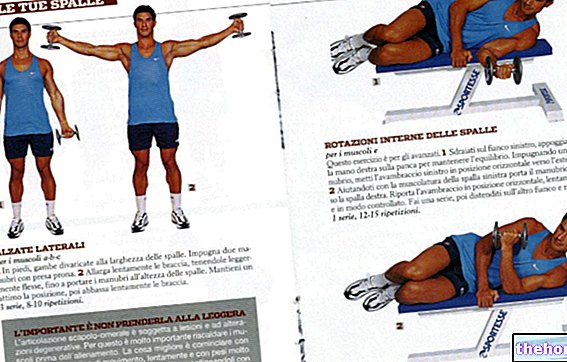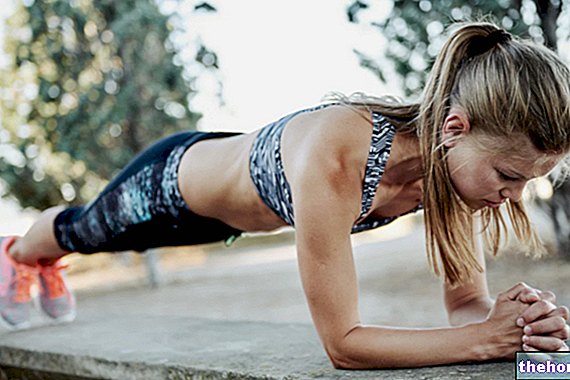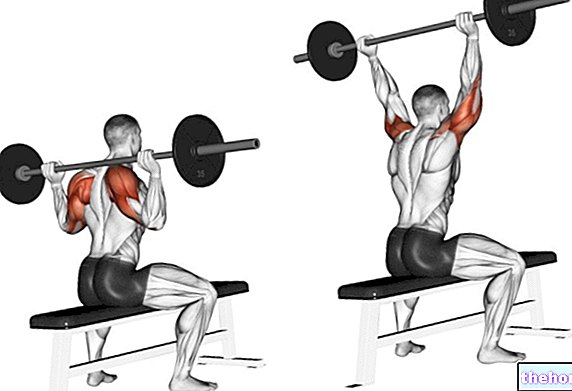Edited by Dr. Massimo Bonazzelli
Synonyms
The slow back exercise with a standing barbell is also known as a Back military press, Rear military press.
Type of Exercise
Slow back with standing barbell is a Basic exercise
Variants
- Slow forward with standing barbell
- Slow forward with seated barbell
- Slow behind with seated barbell
- Push press in front
- Push press behind
Slow behind with standing barbell: Execution
The starting position sees the athlete standing upright, but with the head tilted forward, with the back in its position of strength and the knees slightly flexed. The distance between the feet (stride) is equal to or slightly greater than the distance between the shoulders. The elbows are flexed, the wrists straight and the shoulders are adducted and extra-rotated so that the elbow, wrist and barbell are exactly on the vertical plane from a side view. The bar rests on the lower part of the upper beams of the trapezius as well as on the hands that grab it at a variable distance, but always greater than that between the shoulders. The execution consists in pushing the barbell upwards on the vertical plane on which it was lying before starting, thus trying to trace a segment in a straight line and not a curve. During the thrust, the shoulders abduct in the longitudinal plane, while the elbows extend and the shoulder blades begin to rotate upwards when the elbows are located at shoulder height or slightly higher. The execution ends with full elbow extension. Using knee and / or hip extensions to help lift the bar is considered cheating, but is allowed to maintain balance. This is the basic stretching exercise. above the nape and the correct execution requires an excellent mobility of the shoulder and a good balance.
Muscles involved in Slow Back Exercise with Standing Barbell
Group 0
- Lateral deltoid
- Anterior deltoid
- Upper bundles of the pectoralis major
- Supraspinatus
- Coracobrachialis
- Brachial biceps
Shoulder abduction
Group 1
- Brachial triceps
- Anconeus
Elbow extension
Group 2
- Inferior bundles of the large thoracic dentate
- Lower bundles of the trapezius
- Intermediate beams of the trapezius
Upper scapular rotation
Function of the stabilizing muscles: Stability of the shoulder, shoulder blade, elbow, grip, torso, hip, knee, ankle and foot




























